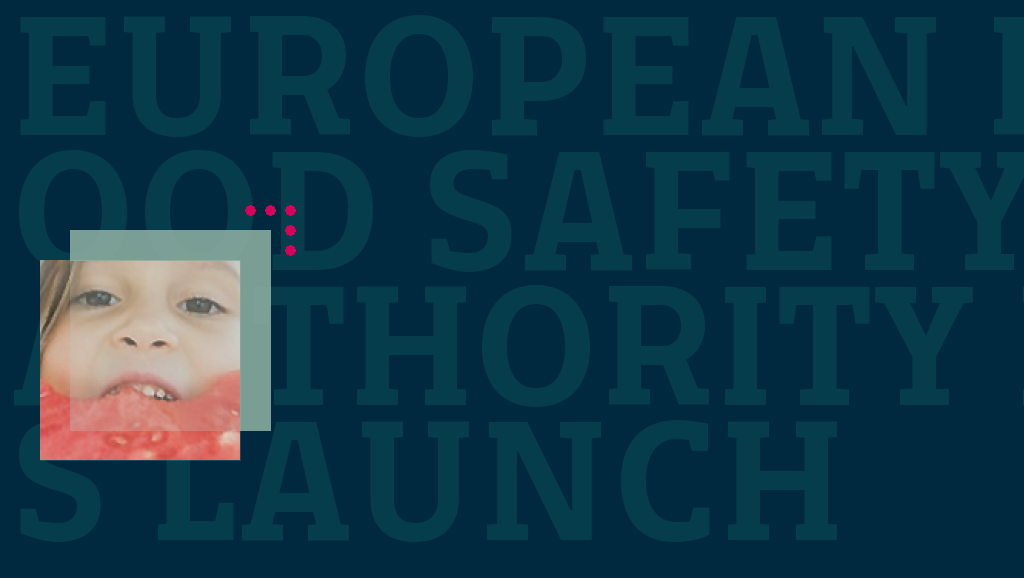Public consultation on the Draft Opinion of the Scientific Committee on the Potential Risks Arising from Nanoscience and Nanotechnologies on Food and Feed safety and the Environment
EFSA (European Food Safety Authority) is launching a public consultation on its draft scientific opinion on the Potential Risks Arising from Nanoscience and Nanotechnologies on Food and Feed safety and the Environment. The work follows a request from the European Commission (EC) to EFSA for advice on this issue in 2007. EFSA’s opinion will help inform consideration of any future EU measures in relation to nanotechnologies in the food and feed area.
EFSA’s Scientific Committee (SC) has led this work and has been assisted by a Working Group of scientists with relevant expertise to consider the different aspects of the Commission’s request. In order to receive relevant information EFSA launched a call for data in January 2008 on its website and via its Advisory Forum.
EFSA is today launching a public consultation on its draft scientific opinion in relation to nanoscience and nanotechnologies and food and feed safety. Nanotechnologies involve the use of substances on a very small scale. This draft opinion focuses on engineered nano materials (ENM) that could be deliberately introduced into the food chain. It elaborates on approaches to risk assessment in this field and as such is not an assessment of any specific application of ENM.
The European Commission (EC) has asked for this opinion as a first step because consideration needs to be given as to whether existing risk assessment approaches can be appropriately applied to this new technology. When finalised, EFSA’s opinion will then help the EC to explore appropriate measures, assess existing legislation and determine the scope of possible further requests for scientific opinions from EFSA in this field.
EFSA’s Scientific Committee (SC), which includes the chairs of all of EFSA’s Panels, is leading this work as it has a multi-disciplinary character and is relevant to a number of the Panels’ respective areas of expertise. They are being assisted by a Working Group of scientists with relevant expertise.
Key conclusions of the draft opinion include:
Established international approaches to risk assessment currently used for non nano chemicals can also be applied to ENM
It is currently not possible to satisfactorily extrapolate scientific data on non nano chemicals and apply it to their nano-sized versions. Consequently specific case by case risk assessments should be performed when assessing their safety, based on specific data from relevant safety tests applicable to the particular application.
Possible risks arise because ENM have particular characteristics, due in part to their small size and high surface area. Small size increases their ability to move around in the body in ways that other substances do not, while their high surface area increases their reactivity.
Additional limitations and uncertainties exist, particularly in relation to characterising, detecting and measuring ENM in food, feed or the body. There is also limited information on absorption, distribution, metabolism and excretion, as well as the toxicity of ENM.
Recommendations are made in the draft opinion for further data, research and investigations to address uncertainties and limitations and therefore strengthen the understanding, evidence base and methodologies to be applied in assessing the risk of ENMs. The opinion also gives an indication to potential applicants of the data they would need to provide to allow for a risk assessment.
In line with EFSA’s policy on openness and transparency and in order for EFSA to receive comments from the scientific community and stakeholders on its work, EFSA engages in public consultations on key issues.
In this respect EFSA would be grateful to receive relevant comments on its Draft Opinion of the Scientific Committee on the Potential Risks Arising from Nanoscience and Nanotechnologies on Food and Feed safety and the Environment.
Interested parties are invited to submit comments and pertinent scientific information by means of the electronic form available on this page by 1st December 2008, 17:00 CET, following the instructions below.
If interested parties wish to contribute scientific studies or data to support a particular comment, these should be preferably have been published or accepted for publication and clear reference to where the supporting information is found should be made.
A submission will not be considered if it:
is submitted after the deadline set out in the call;
is presented in any other form than the instructions and template provide for;
contains comments which do not relate to the contents of the document;
contains information on individual cases;
contains complaints against institutions, personal accusations, irrelevant or offensive statements or material;
is related to policy or risk management aspects, which is out of the scope of EFSA’s activity.
EFSA looks at the scientific evidence and data relevant to its specifc risk assessment remit. Important and relevant feedback will be any further evidence or data that EFSA may not have been able to access that should be considered in the final opinion. Views on wider issues, for example ethical or other societal issues, are not part of EFSA’s remit.
EFSA will assess all relevant comments from interested parties which are submitted in line with the criteria above. The comments will be further considered by the EFSA Scientific Committee and taken into consideration where these will enhance the scientific quality or understanding of the document. Following this exercise EFSA will publish the relevant comments received, as well as a short report on the outcome of the consultation. In addition to the above criteria, for the publication of the comments the following information should be noted;
Repeated comments received from the same contributor will appear only once.
Comments submitted by individuals acting in a personal capacity will be published anonymously.
Comments submitted formally on behalf of an organization will appear with the name of the organization.
















